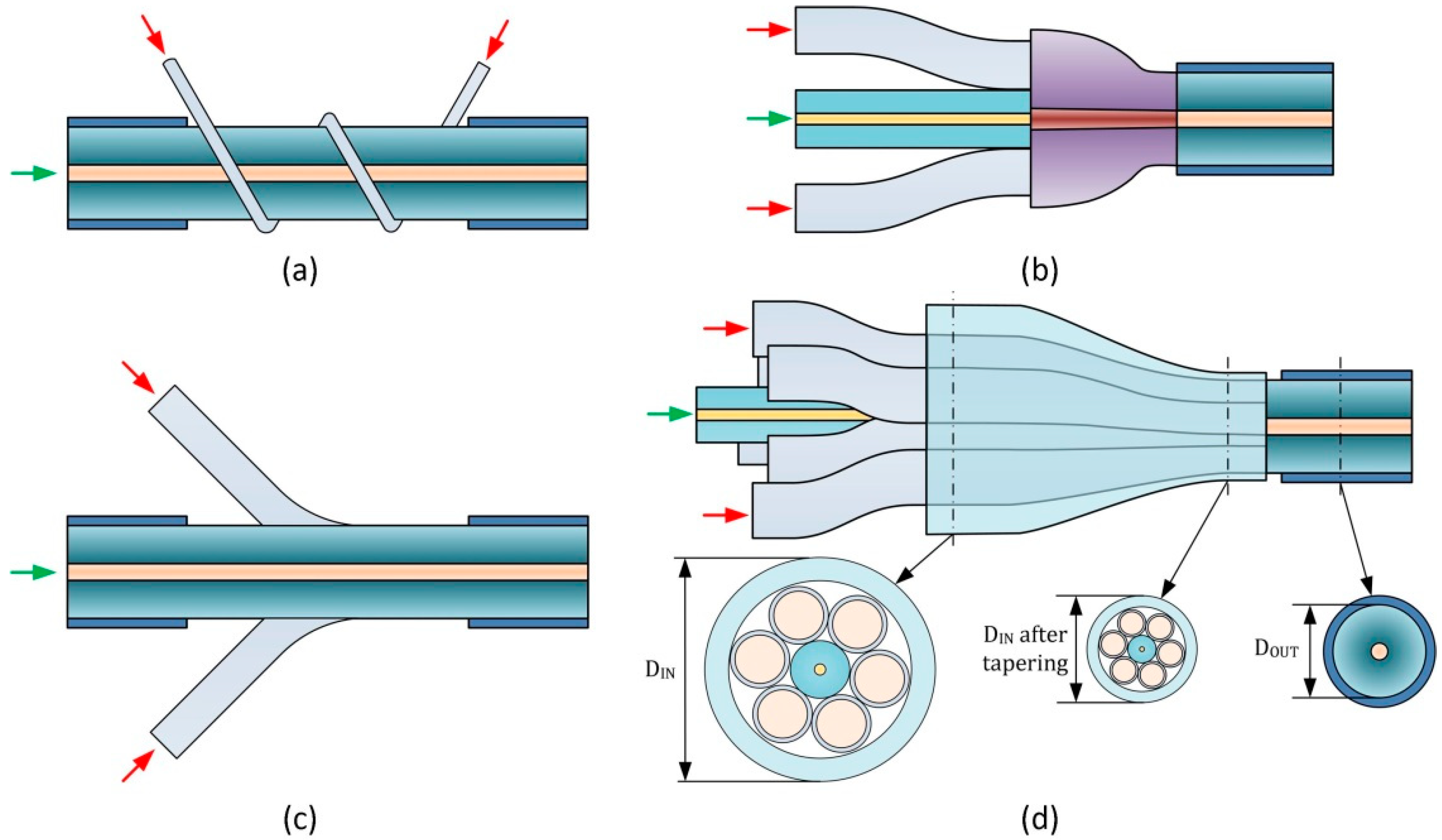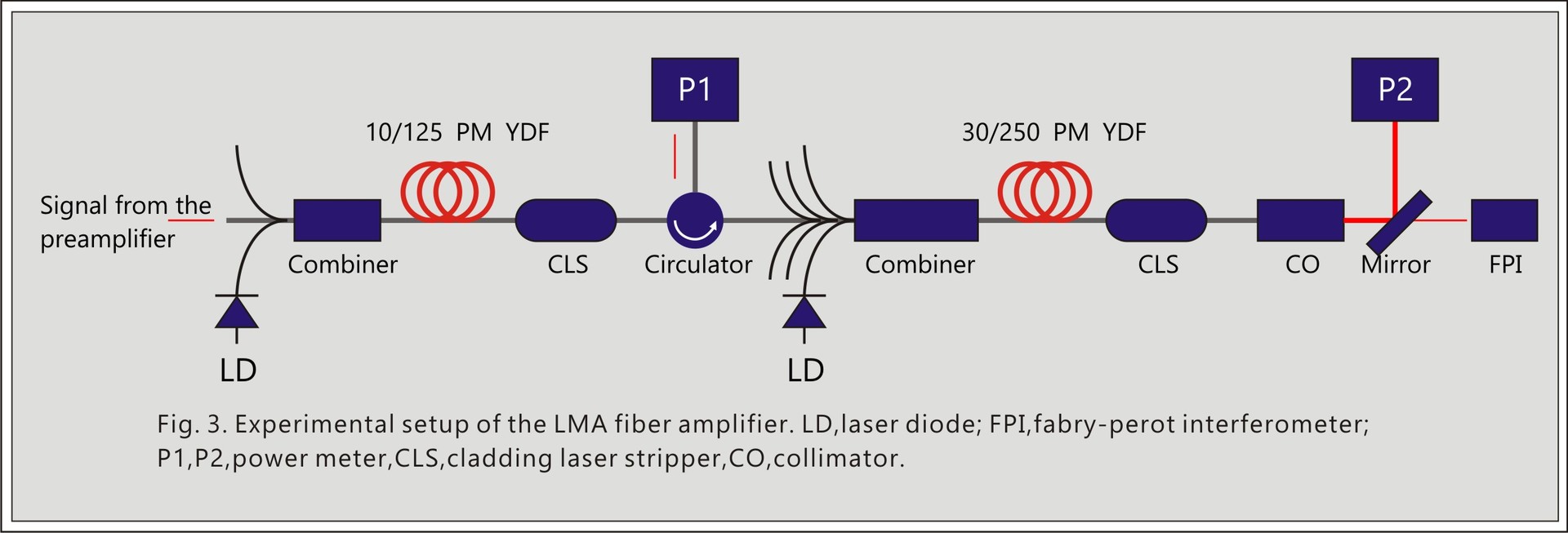Contents

Source: MDPI
Understanding High-Power Fiber Lasers
Introduction to Fiber Lasers
Fiber lasers have evolved significantly since their inception. Initially capable of producing only a few milliwatts of output power, advancements in technology have enabled them to deliver output powers in the range of tens or hundreds of watts, and in some cases, several kilowatts from a single fiber. This remarkable potential is attributed to their high surface-to-volume ratio, which minimizes excessive heating, and the waveguide effect that mitigates thermo-optical issues even under significant heating conditions.
Defining High-Power Lasers
While there is no universally accepted threshold for what constitutes a “high-power” laser, it is generally considered to be lasers with an average power exceeding 100 watts. However, some lasers are classified as high-power with outputs as low as 10 watts.
Fiber Laser Technology vs. Solid-State Lasers
Fiber laser technology has become a formidable competitor to other high-power laser technologies, particularly those based on solid-state bulk lasers like thin-disk lasers. The efficiency and beam quality of fiber lasers make them an attractive choice for various applications.
Double-Clad Fibers and Beam Quality
High-power fiber lasers and amplifiers often utilize rare-earth-doped double-clad fibers, which are pumped using fiber-coupled high-power diode bars or laser diodes. The pump light is introduced into an inner cladding rather than the fiber core, where laser light is generated. This configuration allows for excellent beam quality, even achieving diffraction-limited beam quality in single-mode cores. As such, double-clad fiber lasers serve effectively as brightness converters.
Launching Pump Light
There are multiple methods for launching pump light at high power levels. The simplest involves directly launching into the pump cladding at one or both fiber ends, though this requires precise alignment and cleanliness. Alternatively, fiber-coupled pump diodes can be used to keep the pump light within fibers, utilizing techniques like GTWave fibers or special pump combiner devices.
Lasers and Amplifiers
High-power laser light can be generated using a fiber laser with mirrors on both ends, but many high-power devices employ a master oscillator fiber amplifier (MOFA) architecture. This approach offers advantages in controlling emission properties and allows for modular designs with multiple amplifier stages.
Challenges in High-Power Fiber Devices
Nanosecond Pulses
While Q-switched bulk lasers can generate intense nanosecond pulses, this technique is limited in fiber lasers due to nonlinearities. Fiber devices, however, can use gain-switched laser diodes to create flexible MOPA devices.
Ultrashort Pulses
The large gain bandwidth of fiber amplifiers supports the amplification of ultrashort pulses, but challenges arise from fiber nonlinearity and chromatic dispersion. Techniques like chirped-pulse amplification and amplification of parabolic pulses help mitigate these issues.
Limiting Factors
Various factors can limit the performance of high-power fiber amplifiers and lasers, including available pump power, heat generation, and nonlinear limitations. These challenges require careful consideration and optimization to achieve desired performance levels.
Heat Generation
Heat generation is a common issue for high-power lasers, but fiber amplifiers and lasers distribute heat over longer lengths, reducing its impact. However, minimizing fiber length to mitigate nonlinear effects can lead to substantial temperature rises and thermal lensing.
Nonlinear Limitations
Fiber devices are often limited by nonlinear effects such as stimulated Brillouin scattering (SBS) and stimulated Raman scattering (SRS). These phenomena can lead to power fluctuations and reduced performance but can be mitigated through various techniques.
Future Prospects
Despite significant advancements, high-power fiber devices face limitations that may slow future progress. While pump power availability is generally not a limiting factor, optical intensities are approaching material damage thresholds. Continued optimization and innovation will be essential for further improvements.
In conclusion, fiber laser technology has made remarkable strides, offering high efficiency and beam quality. However, ongoing research and development will be necessary to overcome existing challenges and unlock the full potential of high-power fiber lasers.


Source: Bonacom
Feel free to comment your thoughts.



